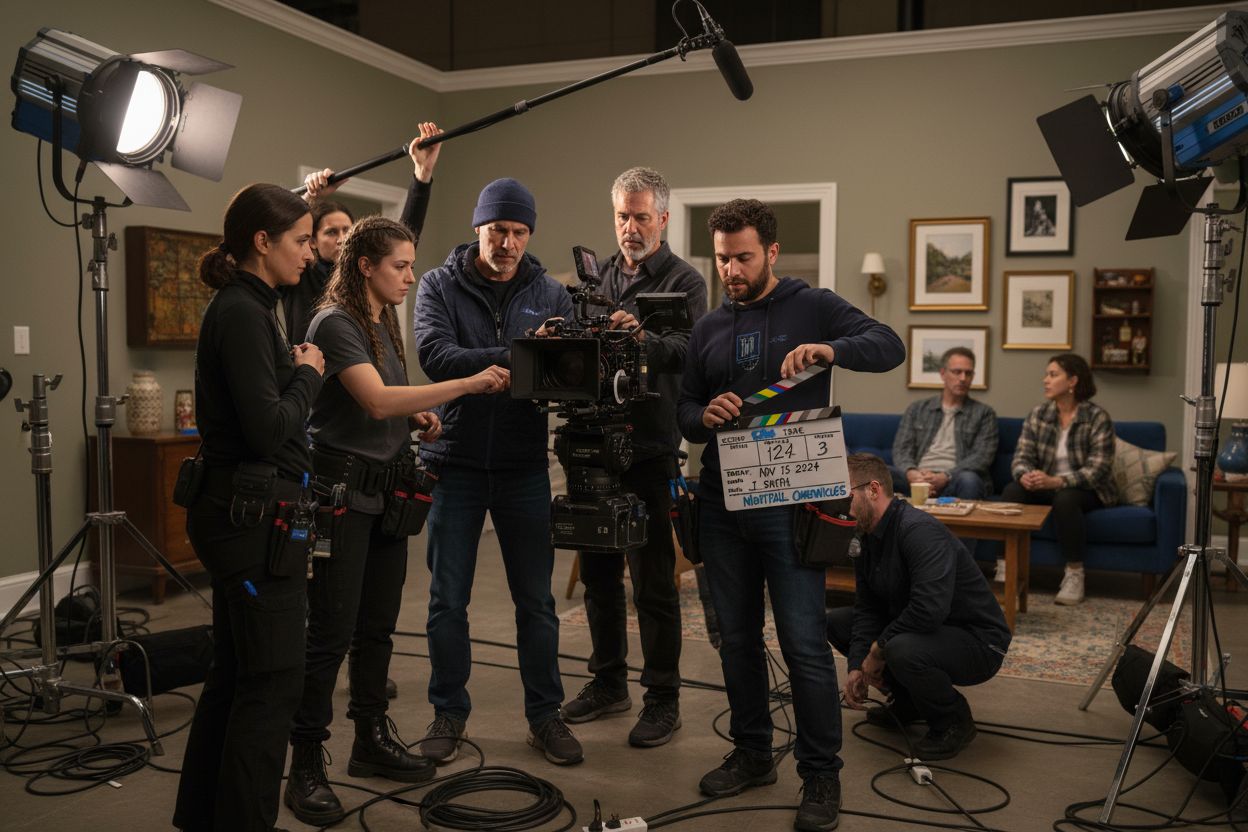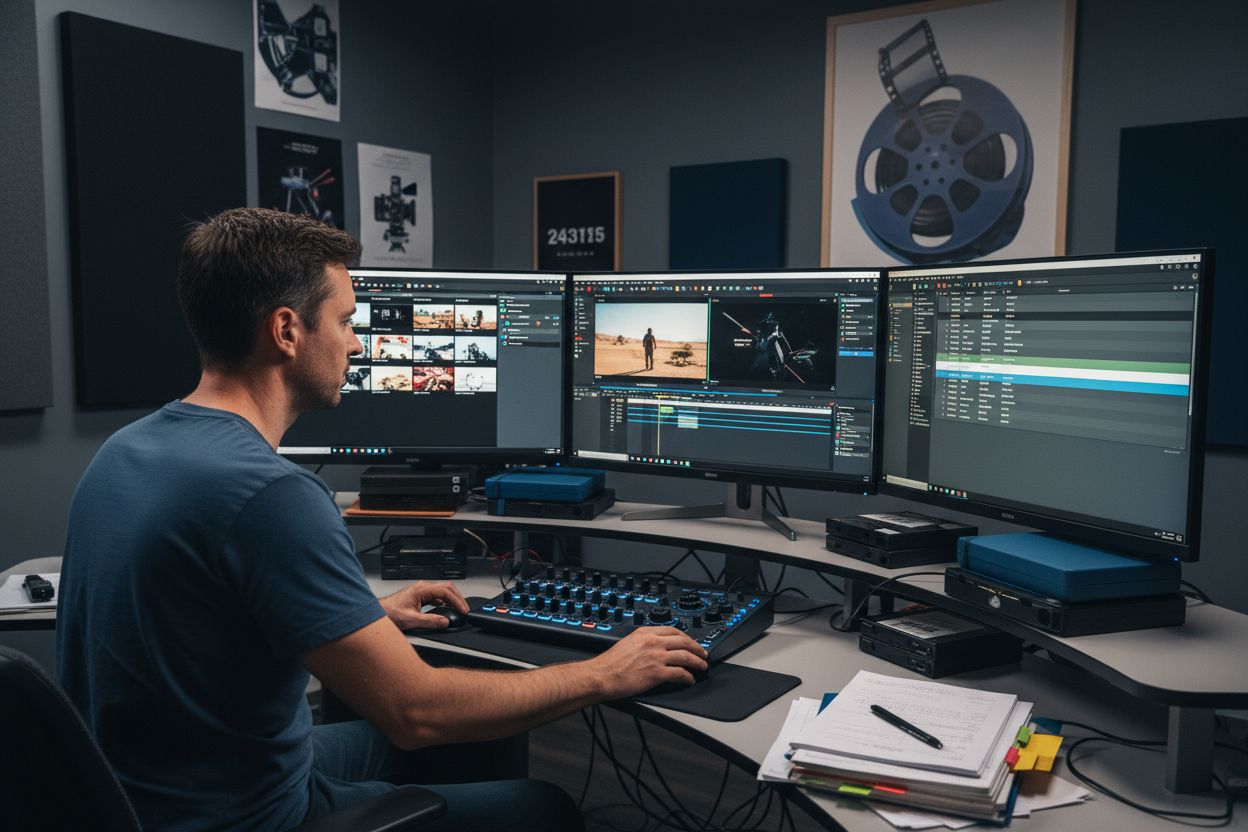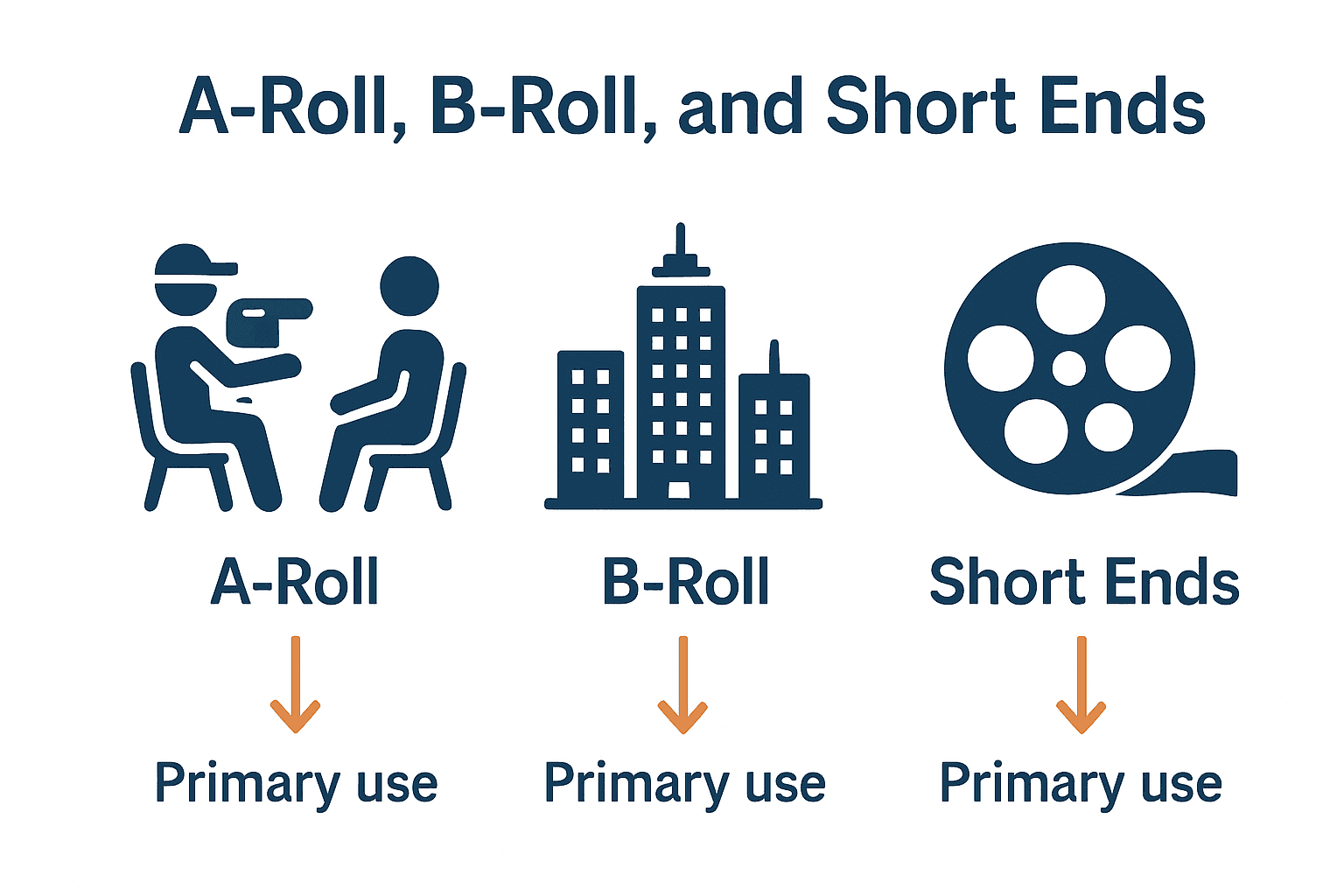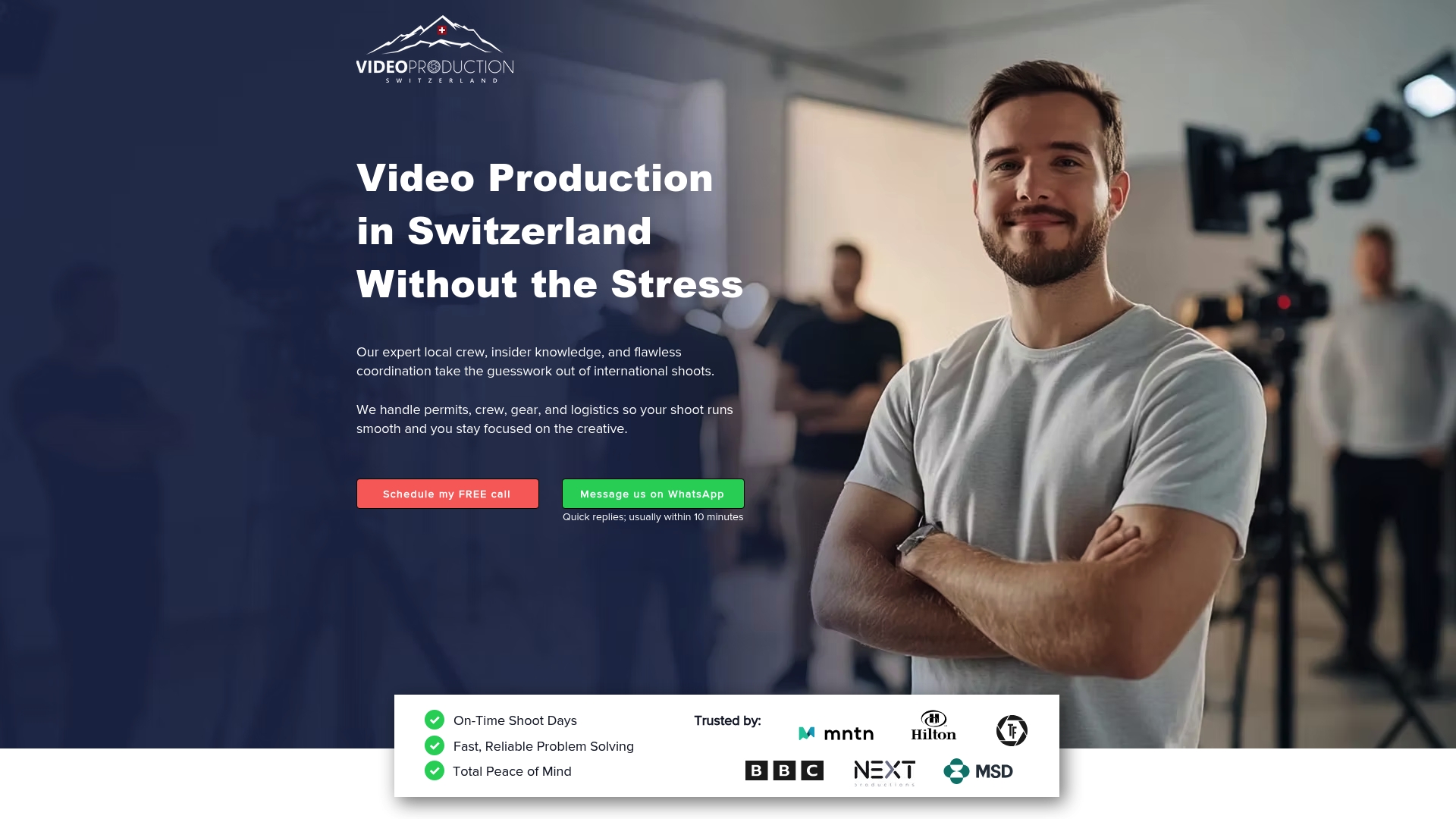Roll Footage Explained: Film Production Fundamentals
- info1419758
- 12 minutes ago
- 6 min read

Did you know that a single feature film can generate over 100 hours of roll footage before editing even begins? For filmmakers, these unedited recordings are more than just raw files—they hold every crucial moment, every performance, and every creative detail that shapes a movie’s final story. Understanding how roll footage works can make all the difference between a film that feels authentic and one that misses the mark.
Key Takeaways
Point | Details |
Definition of Roll Footage | Roll footage is the raw, unedited material captured during film production, which is essential for the editing process. |
Types of Roll Footage | Various types include A-roll, B-roll, and short ends, each serving distinct purposes in storytelling and production efficiency. |
Production Workflow Role | Roll footage is crucial for transitioning from on-set creativity to post-production, requiring organized logging and review processes. |
Legal and Licensing Considerations | Filmmakers must navigate complex licensing agreements to protect their footage and avoid legal disputes related to its use. |
Table of Contents
What Is Roll Footage in Film Production
In the world of filmmaking, roll footage represents the raw, unedited visual material captured during a production. According to Wikipedia’s definition of footage, this term traditionally measured the physical length of film stock, with each foot representing a specific duration of recorded content. Today, roll footage encompasses all the original video clips shot before any post-production editing begins.
During a typical film shoot, crews generate what professionals call dailies or rushes - the unprocessed recordings from each day’s shooting schedule. As Wikipedia notes about dailies, these raw materials are critically reviewed by the production team to assess several key aspects:
Image and technical quality
Actor performance
Lighting and composition
Potential reshoots or adjustments needed
Roll footage serves multiple crucial purposes in film production.

It provides the foundational material from which editors will craft the final narrative, allowing creative professionals to select the most compelling shots, perfect performances, and construct the storytelling sequence. By capturing comprehensive, unfiltered recordings, filmmakers preserve the authentic moments and creative possibilities that might otherwise be lost in more structured shooting approaches. For those looking to dive deeper into video production terminology, read our comprehensive guide on understanding videography terms.
Types of Roll Footage and Their Uses
In film production, roll footage is not a monolithic concept but encompasses several distinct types, each serving unique creative and technical purposes. B-roll, as Wikipedia explains, represents supplemental footage that filmmakers strategically intercut with primary shots to enhance storytelling and visual complexity. This versatile category includes:
Establishing shots that provide context
Cutaway sequences
Insert shots highlighting specific details
Special effects footage
Stock or pickup shots
Professional productions often utilize short ends, which are partial rolls of unexposed film stock preserved from previous shoots. According to research, these remnant film rolls offer significant advantages for productions seeking cost-efficient and creative coverage. Cinematographers appreciate short ends not just for their economic benefits, but also for their potential to capture unexpected visual narratives.
Beyond B-roll and short ends, roll footage also includes primary shooting material, documentary-style candid recordings, and specialized clips like process shots that capture behind-the-scenes action or technical sequences. For filmmakers looking to understand more about supplementary video techniques, we recommend exploring our comprehensive guide on B-roll, which provides deeper insights into creative footage strategies.
Here’s a comparison of the main types of roll footage used in film production:

Type of Roll Footage | Primary Purpose | Typical Use Example |
A-roll | Main narrative primary action | Interviews dialog scenes |
B-roll | Supplemental shots visual context | Establishing shots cutaways |
Short ends | Cost savings creative options | Experimental shots pickup scenes |
Process shots | Behind-the-scenes capture technical processes | Special effects making-of footage |
How Roll Footage Fits Into Production Workflow
Roll footage is the critical connective tissue that bridges on-set creativity with post-production storytelling. According to Ziflow’s production workflow research, during principal photography, film crews systematically capture multiple scenes and takes, creating a comprehensive collection of raw visual material. This process involves carefully rolling cameras to document planned sequences, capturing primary shots and supplementary B-roll that will later become the foundation of the final narrative.
The workflow progresses through several structured stages of management and preservation:
Immediate logging of captured footage
Creating secure backup systems
Daily review of dailies for performance and technical quality
Preliminary organization for post-production
As detailed by Film Supply’s post-production workflow analysis, the next critical phase transitions into post-production. Here, the accumulated roll footage undergoes meticulous organization and logging, preparing for comprehensive editing. Editors and directors carefully sift through the raw materials, selecting the most compelling shots, crafting narrative sequences, and beginning the transformative process of turning unprocessed recordings into a cohesive visual story. For filmmakers seeking to optimize their production processes, our guide on video workflow software offers additional insights into streamlining these complex technical stages.
Rights, Licensing, and Legal Considerations
Roll footage involves complex legal landscapes that filmmakers must carefully navigate to protect their creative work and avoid potential disputes. According to research from licensing experts, different types of licenses are critical for managing how footage can be used, distributed, and monetized. These licenses vary based on several key parameters:
Geographic usage restrictions
Duration of permitted use
Specific media platforms
Exclusivity arrangements
Commercial or non-commercial purposes
Understanding licensing types is crucial for filmmakers. Sync licenses allow footage integration into broader productions, while clip licenses might permit more limited usage. Distribution licenses determine how widely and through which channels the footage can be shared. Each license represents a precise legal agreement defining the boundaries of footage utilization, with improper licensing potentially leading to significant legal challenges and financial penalties.
Navigating these legal intricacies requires meticulous documentation and clear communication between all production stakeholders. Filmmakers must secure proper releases from talent, understand copyright implications, and ensure comprehensive rights management for every piece of captured roll footage. For those seeking deeper insights into production legal frameworks, our comprehensive workflow guide offers additional strategic perspectives on managing these critical legal considerations.
Common Mistakes When Handling Roll Footage
Roll footage management is fraught with potential pitfalls that can significantly compromise a production’s quality and effectiveness. According to Reelon’s research on video filming mistakes, one of the most critical errors filmmakers make is inadequate B-roll capture. This oversight leads to poor narrative coverage during post-production, resulting in weak storytelling and limited editing flexibility.
Technical mistakes can dramatically undermine footage quality. As documented by Premium Beat’s filmmaking analysis, critical technical errors include:
Incorrect white balance settings
Breaking the 180-degree axis rule
Inconsistent exposure
Poor audio recording
Neglecting focus and depth of field
Beyond technical considerations, many filmmakers struggle with systematic roll footage management. Failing to implement robust logging systems, inconsistent backup protocols, and poor organization can lead to lost or misplaced critical shots. These administrative oversights can cause significant production delays and potentially require expensive reshoots. For filmmakers seeking to streamline their production processes and avoid common pitfalls, our comprehensive guide on video workflow software provides essential strategic insights into maintaining high-quality roll footage management.
Make Every Second of Roll Footage Count with Expert Swiss Production Support
You have just learned how critical well-managed roll footage is for a successful film. Yet, challenges like equipment troubles, lost footage, or permit confusion can turn your creative vision into a logistical headache. The article covered the pain points of footage organization, technical mistakes, and the risks of missing essential B-roll. Imagine how much smoother your production will run with a local crew who understands every step from capturing dailies to managing rights and backups. Our team at Video Production Switzerland removes the uncertainty, so you get more usable footage and fewer missed opportunities.

Take control of your film’s narrative today. Schedule a free consultation with Video Production Switzerland and let us handle the details—from trusted crew sourcing to permit management and secure footage handling. Streamline your workflow and ensure every roll of footage is production-ready. Visit our full service overview page now and set your next shoot up for success.
Frequently Asked Questions
What is roll footage in film production?
Roll footage refers to the raw, unedited visual material captured during a film’s production, including all the original video clips shot before any post-production editing.
What are dailies in the context of roll footage?
Dailies, also known as rushes, are the unprocessed recordings reviewed by the production team at the end of each shooting day to assess image quality, actor performance, lighting, and other factors.
What is the difference between A-roll and B-roll footage?
A-roll consists of the main narrative and primary action, such as interviews and dialogue scenes, while B-roll consists of supplemental footage that enhances storytelling and visual context, such as establishing shots and cutaways.
What are common mistakes filmmakers make when handling roll footage?
Common mistakes include inadequate B-roll capture, incorrect white balance settings, inconsistent exposure, poor audio recording, and lack of systematic logging and backup protocols.
Recommended

Comments